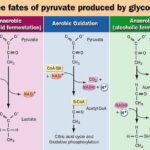What are macromolecules? Give examples.
What are macromolecules? Give examples.
Please login to submit an answer.
A macromolecule is a very large molecule composed of thousands of covalently bonded atoms that performs essential roles in biological and synthetic systems
Biological macromolecules are built from smaller organic units called monomers that join via covalent bonds to form polymers necessary for life processes
Macromolecules possess high molecular weights often exceeding 1000 atomic mass units which confer unique physical properties such as viscosity and stability
History of concept
The term macromolecule was coined in the 1920s by Nobel laureate Hermann Staudinger who proposed that polymers are giant covalent molecules rather than colloidal aggregates
Staudinger’s Macromolecular Hypothesis first articulated in 1920 and developed through the 1920s laid the foundation for modern polymer science and earned him the Nobel Prize in Chemistry in 1953
Importance in biology and industry
Macromolecules comprise the majority of a cell’s dry mass and are integral to cellular structure function and energy storage
Synthetic macromolecules such as plastics and synthetic fibers underpin industries from materials engineering to healthcare
Examples of biological macromolecules
Carbohydrates
Monosaccharides such as glucose and fructose
Polysaccharides such as starch cellulose and glycogen
Proteins
Enzymes such as DNA polymerase and amylase
Structural proteins such as collagen and keratin
Nucleic acids
DNA carrying genetic information
RNA involved in transcription and translation
Lipids
Triglycerides such as fats and oils
Phospholipids forming cellular membranes
- Share on Facebook
- Share on Twitter
- Share on LinkedIn
Helpful: 0%




